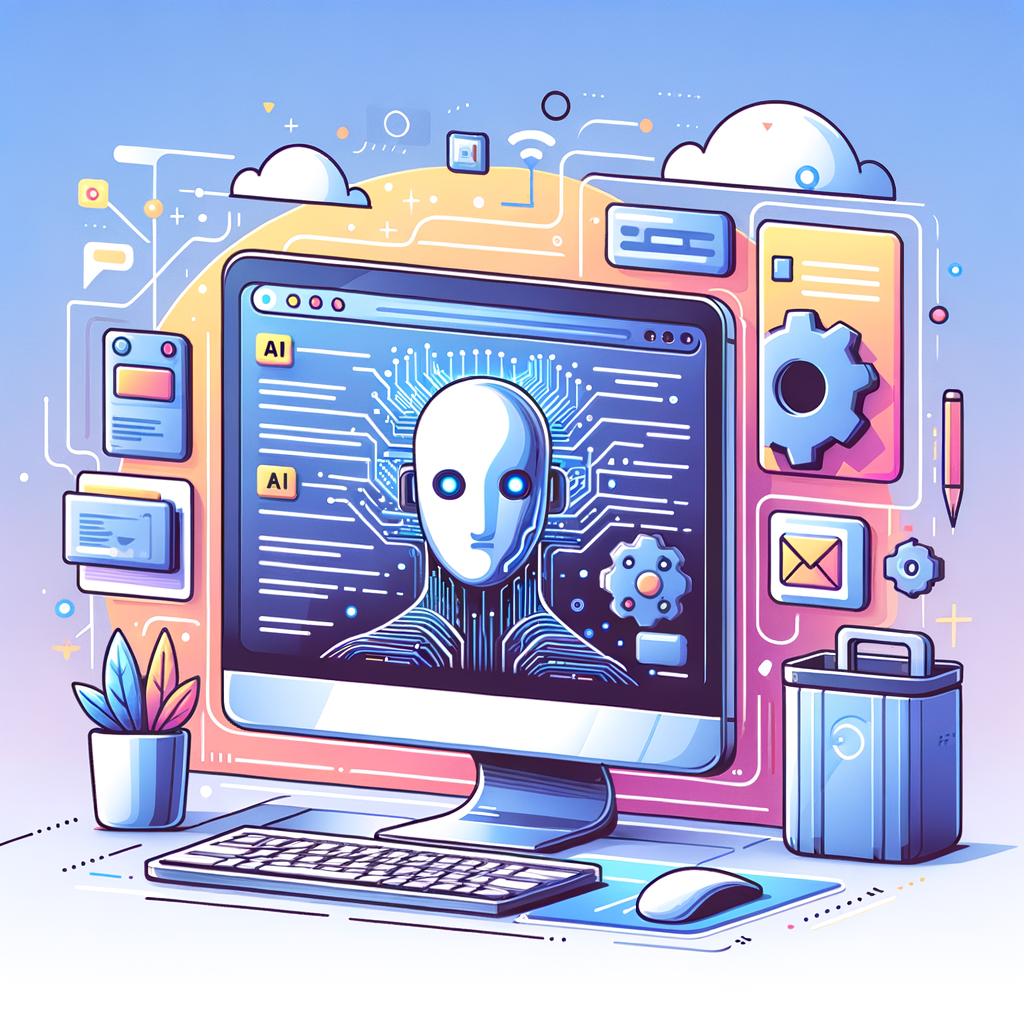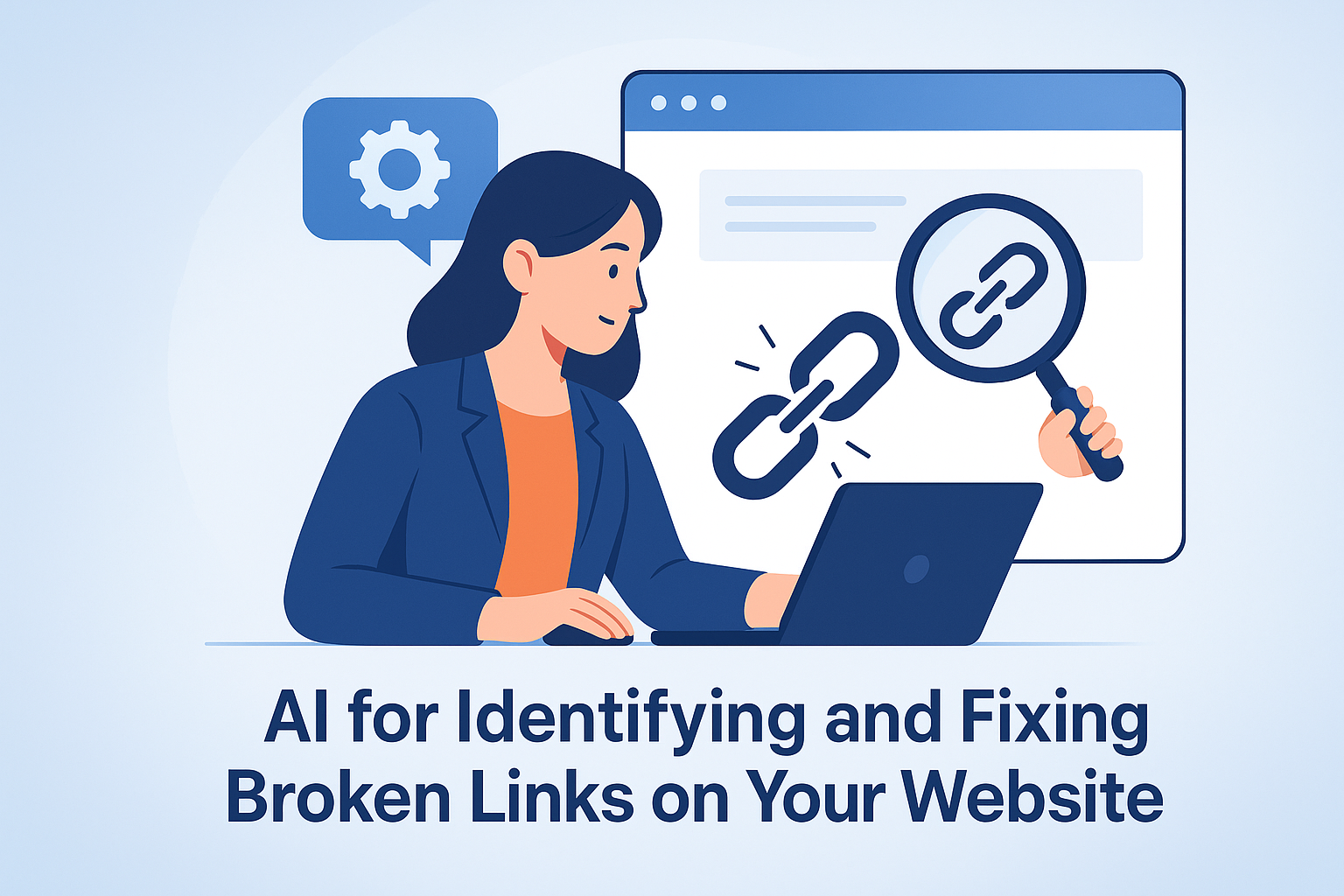Creating great video content is only half the battle.
If your video title is vague, boring, or keyword-blind—and your description lacks structure or clarity—you’re leaving views, engagement, and SEO rankings on the table.
That’s why the most successful video marketers treat titles and descriptions like metadata gold. And now, with artificial intelligence, you can create high-performing video metadata at scale—optimized for search, engagement, and clicks.
In this guide, you’ll learn how to:
- Understand what makes a great video title and description
- Use AI to generate metadata that’s optimized for YouTube, Google, and your website
- Integrate AI into your existing video publishing workflows
- Apply DIYSEO GPT and SEO AI Writer to generate, test, and refine titles and descriptions
- Leverage AI metadata for backlinks and visibility using Link Marketplace
Why Video Titles and Descriptions Matter for SEO
Whether you’re publishing on YouTube, your website, or both, metadata matters. A lot.
🎯 Search Rankings
Both Google and YouTube use titles and descriptions to understand the relevance of your video to search queries.
📈 Click-Through Rate (CTR)
A strong, curiosity-driven title combined with a benefit-focused description improves CTR from search results and YouTube suggested videos.
🤖 Context & Indexing
Descriptions give algorithms (and viewers) clarity about your video’s topic, tone, and value.
🔗 Internal Links and Keywords
Descriptions are prime space for SEO keywords, hashtags, timestamps, internal links, and CTAs.
What Makes an SEO-Friendly Video Title?
An ideal video title should be:
- Clear and specific
- Keyword-rich but natural
- Emotionally engaging (using curiosity, urgency, or value)
- Front-loaded (put your target keyword early)
- 60 characters or less (especially for YouTube)
Examples:
- ✅ How to Create SEO-Optimized Blog Posts with AI
- ✅ Top 5 Tools to Automate Your SEO in 2024
- ✅ AI SEO Strategy: What’s Working Right Now
What Makes a Great Video Description?
A high-performing description typically includes:
- Keyword-optimized first 2 sentences (important for rankings and previews)
- Short summary of what the video covers
- Timestamps or chapter markers (especially for long-form content)
- Links to related resources (blog posts, products, downloads)
- Call to action (subscribe, contact, try a tool, etc.)
- Hashtags or tags for relevance and visibility
- Schema-friendly formatting for Google rich results
How AI Enhances Video Metadata Creation
Traditional metadata writing is:
- Time-consuming
- Repetitive
- Easy to overlook or rush
AI solves that by:
- Generating multiple titles/descriptions instantly
- Tailoring metadata to different platforms (YouTube, Vimeo, site embed)
- Inserting SEO keywords naturally
- Creating curiosity and clarity simultaneously
- Testing and optimizing based on CTR or engagement feedback
Step-by-Step: Using AI to Create Video Titles and Descriptions
🎥 Step 1: Start with Your Video Topic or Transcript
If you already have a video title or transcript, feed that into DIYSEO GPT or SEO AI Writer.
Prompt:
“Generate 5 SEO-optimized video titles for this video transcript on ‘AI for On-Page SEO.’ Use different tones: professional, educational, clickworthy.”
AI will return:
- Master On-Page SEO with AI: A Beginner’s Guide
- AI Tools That Fix Your SEO Without Code
- How to Boost Rankings with AI-Powered SEO Fixes
- On-Page SEO Automation: Tools You Need to Know
- AI vs Manual SEO: Which Gets Better Results?
✍️ Step 2: Create a Long-Form, Structured Description
Prompt:
“Write a 250-word SEO-friendly video description for a YouTube video titled ‘AI for Automating SEO Reports.’ Include summary, target keywords, CTAs, and related content links.”
AI will provide a well-structured, keyword-rich description that includes:
- Short intro paragraph
- Bullet points or highlights
- Link prompts
- CTA like “Subscribe for more AI SEO tutorials”
- Optimized placement of keywords like SEO reporting tools, AI dashboards, automated analytics
🔎 Step 3: Optimize for Keywords and SERP Features
Ask DIYSEO GPT:
“Analyze this video title and description for SEO. Suggest improvements to match keywords like ‘AI SEO tools,’ ‘SEO automation,’ and ‘how to improve rankings with AI.’”
AI will recommend:
- More prominent keyword placement
- Semantic variations (e.g., “search engine automation” instead of repeating “SEO automation”)
- Schema tags or formatting for enhanced rich results
🔁 Step 4: A/B Test Variations Based on Engagement
Using AI, you can generate multiple metadata sets and test over time.
Prompt:
“Give me 3 alternate titles with different angles: educational, humorous, direct.”
Track which variation:
- Gets the most clicks
- Earns longer watch times
- Converts best with CTAs
After collecting performance data, you can optimize further with:
“Based on this engagement data, rewrite the title to improve CTR while keeping the keyword ‘AI SEO automation.’”
🔗 Step 5: Leverage the Description for Internal Linking and Backlinking
Don’t waste the opportunity to drive traffic to other assets.
Ask:
“Suggest 3 related blog posts I should link to from this video on AI-powered keyword research.”
Include these links in the description with keyword-optimized anchor text. Then use Link Marketplace to build external links back to your high-performing video landing pages.
Prompt:
“Find backlink opportunities for this video description page targeting ‘AI for SEO research.’ Focus on marketing and SaaS blogs.”
Real-World Use Cases
🎓 Educational Channels
Generate schema-ready lesson summaries, bullet-point recaps, and timestamped segments.
🛍️ Product Videos
Use AI to highlight features, insert keywords, and drive users to shop or learn more.
🎙️ Podcast Clips
Turn transcript snippets into curiosity-driven YouTube titles and time-stamped show notes.
📈 Tutorial Series
Use AI to title each part of your series strategically with connected keyword variations (e.g., Part 1: AI SEO Audits, Part 2: AI for Backlink Building, etc.).
Title & Description AI Prompt Library
Here are high-performing prompts to feed into DIYSEO tools:
| Goal | Prompt |
|---|---|
| Generate 5 engaging titles | “Write 5 SEO video titles for [topic] using different tones.” |
| Make a long-form description | “Write a 250-word YouTube description for .” |
| Improve CTR | “Rewrite this title to be more clickable and curiosity-driven.” |
| Add keywords | “Insert primary and secondary keywords into this video description.” |
| Match search intent | “Optimize this metadata to match the intent of users searching for [keyword].” |
Final Thoughts
Don’t let great video content get buried by weak metadata.
With AI, you can:
- Craft compelling, search-optimized video titles in seconds
- Generate rich, keyword-aligned descriptions that improve discoverability
- Test and iterate metadata based on engagement
- Multiply the visibility and ROI of every video you produce
Pair your video strategy with DIYSEO GPT to generate and audit titles, SEO AI Writer to produce high-quality descriptions, and Link Marketplace to build authority and drive traffic.
AI doesn’t just make video SEO easier—it makes it smarter.
Frequently Asked Questions
1. What is AI-generated video description and title creation, and why is it important?
AI-generated video descriptions and titles are crafted using advanced algorithms that analyze video content and automatically produce relevant descriptions and catchy titles for videos. The importance of these AI-generated components cannot be overstated. With millions of videos uploaded daily across platforms like YouTube, TikTok, and Instagram, it’s becoming increasingly critical for content creators to stand out. Engaging descriptions and inventive titles use powerful hooks that grab viewers’ attention, optimize searchability, and improve video rankings in search engine results. Moreover, AI offers the advantage of generating these elements efficiently and consistently, saving content creators invaluable time and effort.
This AI application taps into massive datasets, learning linguistic patterns, context, and popular trends to tailor descriptions and titles likely to resonate with target audiences. Moreover, its ability to adapt to evolving viewers’ interests and platform algorithms provides a competitive edge in the digital content landscape.
2. How does AI assess what makes a good video description or title?
AI utilizes Natural Language Processing (NLP) and Machine Learning (ML) techniques to evaluate what constitutes compelling video descriptions and titles. By analyzing vast amounts of data from successful videos, AI pinpoints patterns, key phrases, and styles that effectively engage audiences. It considers various factors such as relevancy, clarity, emotional engagement, and search optimization.
The AI is trained with examples of high-performing video content, which helps it understand the nuances of language, viewer preferences, and industry trends. It assesses elements like the use of action verbs, emotional triggers, numeric lists, questions, and even humor to determine what strategies boost viewer engagement and searchability. It’s like having a digital content expert at your disposal, constantly learning and refining techniques to ensure the content stays fresh and captivating.
3. Can AI-generated descriptions and titles replace human creativity?
While AI-generated descriptions and titles are incredibly efficient and insightful, they aren’t a complete substitute for human creativity and innovation. AI excels in pattern recognition and data analysis, optimizing video descriptions and titles based on previously successful content. However, human creativity remains essential for infusing originality, cultural context, and nuanced storytelling, which machines may struggle to replicate.
Rather than replace, AI technology complements human creativity. It provides content creators with a robust foundation, offering suggestions and insights that streamline the creative process. By automating repetitive tasks, AI allows creators to focus more on unique ideas and creative strategies, using the technology as a collaborative partner rather than a replacement.
4. What are the potential challenges or limitations of using AI for these tasks?
Despite its capabilities, using AI for video descriptions and titles presents certain challenges and limitations. AI systems rely heavily on data, and inadequate or biased training data can lead to suboptimal results. If the AI hasn’t been exposed to diverse and accurate examples, it might generate content that’s generic, out-of-touch with current trends, or lacking in cultural sensitivity.
Another challenge is the evolving nature of language and cultural references, which AI might struggle to keep up with in real-time. While AI is efficient, it lacks the intuitive understanding of human emotions and complex subtleties that only a human touch can provide. Additionally, content creators need to continuously monitor AI-generated descriptions and titles to ensure they align with brand voice and content goals.
5. How can content creators integrate AI-driven video description and title generation into their workflow?
Integrating AI-driven video description and title generation into an existing workflow is a strategic decision that requires planning and adaptation. Firstly, content creators need to select the right AI tools or platforms that align with their specific needs and budget. It’s important to assess these platforms based on their performance track record, ease of use, and adaptability to the unique branding and content style.
Once the right tools are chosen, creators can gradually incorporate these tools into their pre-production or post-production processes. Determine where AI can best optimize your workflow, such as initial brainstorming sessions, mid-edit reviews, or end-stage publishing checks. To fully leverage AI, it’s beneficial to approach it as an iterative process, reviewing AI outputs, providing feedback, and making adjustments as needed.
Additionally, consider coupling AI outputs with human insights by collaborating with team members to review AI suggestions and balance automation with strategic branding and creative ideas. Regular training sessions on AI functionalities can empower teams to use these tools more effectively. The ultimate goal is to create a streamlined, intuitive process that harnesses AI’s potential while celebrating human ingenuity.



